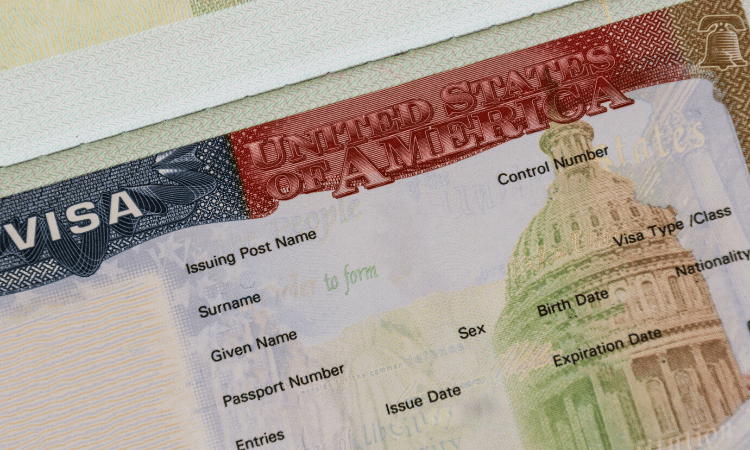When it comes to traveling to the United States, understanding the different types of visas available can be a bit overwhelming. Whether you’re planning a business trip or a leisurely visit, knowing which visa suits your needs is crucial. In this guide, we’ll delve into the two most common types of US visas: Business and Visitor visas. Business Visa FOR US
What is a US Business Visa?
A US Business Visa allows foreign nationals to enter the United States for business-related purposes. This could include attending meetings, negotiating contracts, or participating in conferences. It’s essential to distinguish between the different types of business visas, each serving specific purposes.
What is a US Visitor Visa?
A US Visitor Visa is designed for individuals traveling to the US for leisure, tourism, or to visit family and friends. The most common type is the B-2 Tourist Visa. It’s important to understand the difference between a visitor visa and other types of visas, such as student or work visas.
Types of US Business Visas
B-1 Business Visitor Visa
The B-1 Visa is for those who need to enter the US for short-term business activities. This includes attending meetings, negotiating contracts, or participating in training. The B-1 Visa is not intended for those seeking permanent residency or full-time employment.
L-1 Intracompany Transferee Visa
The L-1 Visa is for employees of multinational companies who are being transferred to a US office. There are two subcategories: L-1A for managers and executives, and L-1B for employees with specialized knowledge. This visa is ideal for those looking to work in the US temporarily for their employer. Visitor Visa FOR US
E-2 Treaty Investor Visa
The E-2 Visa is for individuals who are investing a substantial amount of capital in a US business. This visa is available to nationals of countries with which the US has a treaty of commerce and navigation. It allows investors and their employees to work in the US, provided they maintain a significant role in the enterprise.
Types of US Visitor Visas
B-2 Tourist Visa
The B-2 Visa is the most common visitor visa, used for tourism, visiting family, or medical treatment. It’s typically granted for a period of six months but can be extended in certain circumstances. This visa does not allow for employment or study.
ESTA for Visa Waiver Program Participants
For citizens of countries participating in the Visa Waiver Program, the ESTA (Electronic System for Travel Authorization) allows for short visits to the US without needing a traditional visa. ESTA is valid for up to 90 days and is primarily for tourism or business visits.
Application Process for US Business Visas
Eligibility Criteria
To qualify for a US Business Visa, you must demonstrate that your visit is for legitimate business purposes. You need to prove that you have sufficient ties to your home country and that you intend to return after your visit.
Required Documents
Typical documents required include a valid passport, a completed DS-160 form, proof of business activities, and evidence of financial means. You may also need an invitation letter from a US business partner or employer.
Application Steps
- Complete the DS-160 form online.
- Pay the visa application fee.
- Schedule a visa interview at a US Embassy or Consulate.
- Attend the interview with your supporting documents.
Application Process for US Visitor Visas
Eligibility Criteria
For a visitor visa, you must prove that you are visiting for tourism or to visit family and will return to your home country. You need to demonstrate financial stability and a genuine intent to return.
Required Documents
Documents typically include a valid passport, a completed DS-160 form, proof of your travel plans, and evidence of financial capability. If visiting family, an invitation letter from your host may be required.
Application Steps
- Fill out the DS-160 form online.
- Pay the visa application fee.
- Book a visa interview appointment.
- Attend the interview and present your documents.
Common Challenges and Solutions
Delays and Denials
Visa applications can sometimes be delayed or denied due to missing documents, incomplete applications, or lack of evidence. If faced with a denial, review the reasons provided and address them in your reapplication.
Tips for a Successful Visa Application
Ensure that all forms are filled out accurately and completely. Provide thorough and honest information, and be prepared to answer questions about your visit during the interview. It’s also beneficial to check current visa policies as they can change.
Conclusion
Navigating the US visa system might seem daunting, but with the right knowledge and preparation, it can be a smooth process. Whether you’re applying for a business or visitor visa, understanding the specific requirements and procedures is key to a successful application. By following the steps outlined in this guide, you can enhance your chances of securing the visa you need.
FAQs
How long does it take to process a business visa?
Processing times for business visas can vary depending on the type of visa and the applicant’s home country. Generally, it can take several weeks to a few months.
Can I switch from a visitor visa to a business visa?
Switching visas while in the US is not straightforward and often requires leaving the country and applying for a new visa. Consult with an immigration attorney for advice tailored to your situation.
What are the costs associated with US visas?
Visa costs vary depending on the type of visa and the applicant’s nationality. Fees for business and visitor visas can range from $160 to $500 or more.
How can I expedite my visa application?
Expedited processing is available for some visa categories. Check with the US Embassy or Consulate for options and requirements for expedited processing.
Can I work on a visitor visa?
No, a visitor visa does not permit employment in the US. For work purposes, you would need to apply for a relevant business or work visa.



